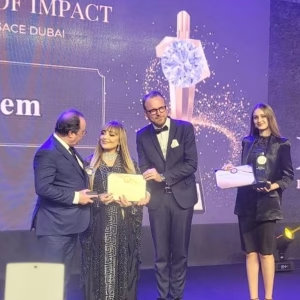In recent years, the United Arab Emirates (UAE) has increasingly turned its attention to eco-friendly homes, leading a green real estate revolution that reflects its commitment to sustainable living. As environmental concerns continue to grow globally, the UAE is making significant strides to ensure that its urban development aligns with green building practices. From energy-efficient designs to the use of sustainable materials, eco-friendly homes in the UAE are becoming the new norm, marking a shift toward a more environmentally conscious future.
The Rise of Green Homes in the UAE
The UAE’s green real estate movement is not just a passing trend but a vital part of the nation’s broader sustainability goals. With rapid urbanization and the need to accommodate a growing population, the UAE has faced challenges in balancing development with environmental preservation. As a response, the government, developers, and architects have come together to adopt and promote eco-friendly practices in residential construction.
One of the main drivers of this movement is the UAE’s commitment to reducing its carbon footprint. In line with the Paris Agreement and the UAE Vision 2021, the country aims to minimize its environmental impact while enhancing its infrastructure. This ambition is reflected in the growing number of green buildings and sustainable communities across the UAE, especially in cities like Dubai, Abu Dhabi, and Sharjah.

Sustainable Architecture and Design
The concept of eco-friendly homes in the UAE goes beyond just energy-efficient buildings. It involves a comprehensive approach to sustainable architecture that takes into account various factors such as energy use, water consumption, waste management, and the environmental impact of construction materials.
Architects and developers are incorporating energy-saving designs into new homes, such as solar panels, energy-efficient lighting, and smart climate control systems. These homes are not only designed to reduce energy consumption but also to enhance the overall living experience by creating healthier indoor environments with improved air quality and natural lighting.

Moreover, the use of locally sourced and sustainable building materials is becoming a priority in construction projects. Materials like recycled steel, eco-friendly concrete, and timber from sustainable forests are gaining popularity, helping to reduce the environmental impact of the construction process. The emphasis on sustainable materials also ensures that homes are built to last, with less need for costly and energy-intensive renovations down the line.
Green Certifications and Regulations
The UAE has introduced a range of initiatives to encourage and regulate the construction of eco-friendly homes. One of the most important programs is the Estidama sustainability rating system, which is widely adopted in the UAE. This system, developed by the Abu Dhabi Urban Planning Council, evaluates buildings based on various environmental criteria, including energy and water efficiency, indoor air quality, and the use of sustainable materials. Buildings that meet the Estidama standards are awarded a Pearl Rating, with higher ratings indicating more sustainable practices.
Additionally, the Dubai Municipality’s Green Building Regulations and the Dubai Sustainable City are other examples of initiatives that are helping to establish eco-friendly living as a mainstream choice in the UAE. These programs encourage developers to integrate green building standards into their projects while offering incentives to those who prioritize sustainability in their designs.
The Role of Technology in Green Living
Technology plays a key role in making eco-friendly homes more efficient and accessible. Smart home systems are becoming a standard feature in many new developments in the UAE, allowing homeowners to control everything from lighting and heating to security and water usage with the touch of a button. These systems help reduce energy consumption by optimizing the home’s performance based on the residents’ needs.
In addition, innovative technologies like rainwater harvesting systems, greywater recycling, and advanced irrigation methods are helping to conserve water, which is particularly important in the UAE’s desert climate. These technologies not only reduce water waste but also help homeowners lower their utility bills and contribute to the overall conservation of resources.
The Benefits of Eco-Friendly Homes
The move toward green real estate offers a wide range of benefits for both homeowners and the environment. For residents, living in eco-friendly homes means lower utility bills, improved indoor air quality, and a reduced carbon footprint. Many eco-friendly homes are also designed with the well-being of their occupants in mind, providing spaces that promote mental and physical health through natural ventilation, daylighting, and the use of non-toxic materials.
For the environment, green homes contribute to reducing pollution, conserving resources, and minimizing the impact of construction on natural habitats. They also help the UAE move closer to its sustainability goals, particularly in terms of energy and water conservation. As more homeowners make the switch to eco-friendly homes, the country’s overall carbon footprint will continue to shrink, contributing to a greener, more sustainable future.
The Challenges and Future of Eco-Friendly Homes in the UAE

Despite the rapid growth of green real estate in the UAE, several challenges remain. One of the main obstacles is the higher initial cost of building eco-friendly homes. Sustainable materials, energy-efficient systems, and green certifications often come with a premium price tag, making it more expensive for developers to build these homes. However, experts argue that the long-term savings on energy and water bills, combined with the environmental benefits, make these homes a smart investment in the future.
Another challenge is the need for greater awareness and education among homeowners about the benefits of green living. While there is a growing interest in eco-friendly homes, some buyers may still be hesitant due to misconceptions about the costs or the perceived complexity of living in a smart, energy-efficient home. Over time, as more people experience the advantages of sustainable living, the demand for green homes is expected to rise, and the challenges associated with cost and awareness will gradually diminish.
Looking ahead, the future of eco-friendly homes in the UAE looks promising. As sustainability continues to take center stage in urban development, green homes are expected to become more mainstream. Developers will likely adopt more cost-effective and innovative technologies, making these homes more affordable and accessible to a wider range of buyers. Furthermore, as the UAE continues to invest in renewable energy and sustainable infrastructure, eco-friendly homes will play a central role in the country’s journey toward becoming a global leader in sustainability.
Conclusion
The UAE’s green real estate movement is transforming the way people live, offering a glimpse into a future where sustainability and comfort go hand in hand. Eco-friendly homes are no longer a luxury but an attainable choice for homeowners who want to reduce their environmental impact and live in healthier, more efficient spaces. With the government, developers, and residents all playing their part, the UAE is paving the way for a more sustainable, eco-conscious future, proving that green living can be both practical and desirable.
Also read: The New Face of Emirati Food: Young Creators in the Kitchen













